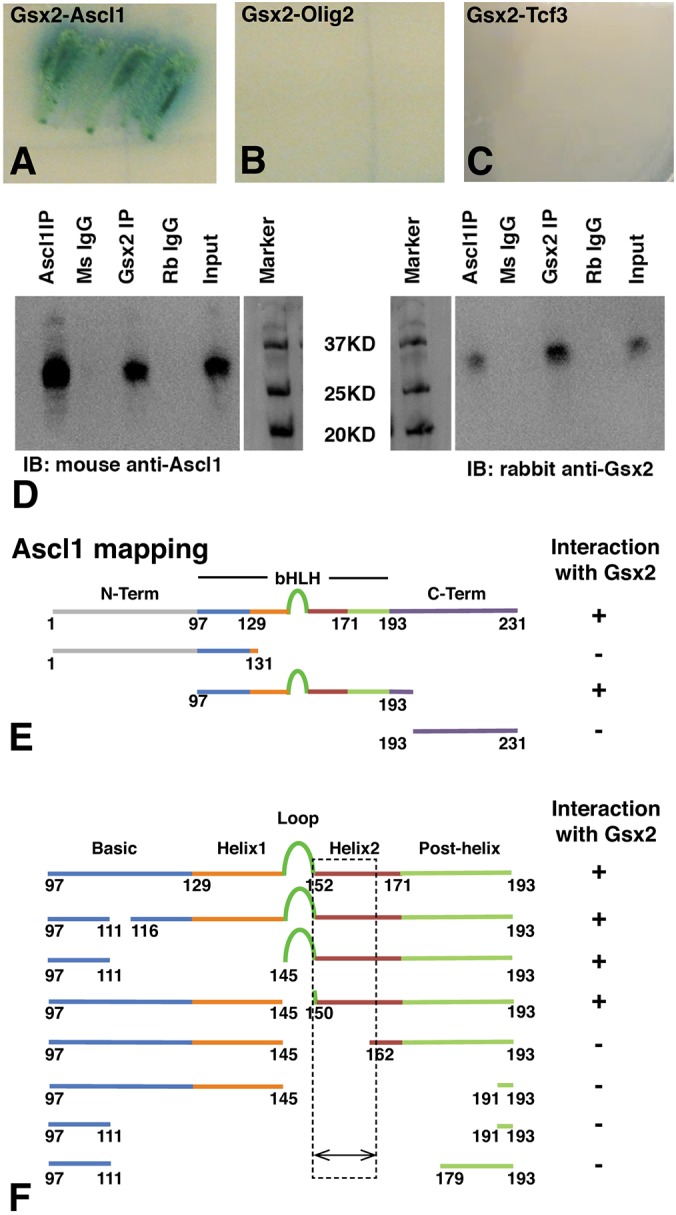Fig. 5.

Gsx2 physically interacts with the bHLH domain of Ascl1 in the mouse telencephalon. (A-C) Yeast two-hybrid experiments using either Gsx2 as bait and Ascl1 (A), Olig2 (B), or Tcf3 as prey (C). Note robust reporter gene expression (i.e. α-gal) was only observed in the Gsx2-Ascl1 experiment (A). (D) Co-IP experiments using lysates from E12.5 mouse telencephalon. Pulling down Gsx2 with a rabbit antibody and blotting with a mouse Ascl1 antibody showed association of Ascl1 with Gsx2. Conversely, pulling down Ascl1 and blotting with a Gsx2 antibody showed association of these two proteins in the embryonic mouse telencephalon. Rabbit (Rb) IgG and mouse (Ms) IgG were used as controls for the Gsx2 and Ascl1 pull downs, respectively, and the input lane contained 10% input. (E) Using truncated portions of Ascl1 (e.g. N-Terminal, bHLH and C-Terminal) in a yeast two-hybrid assay, we found that only the bHLH domain of Ascl1 interacts with Gsx2. (F) Further deletion mapping studies using the yeast two-hybrid assay showed that the second helix (amino acids 150-162) of Ascl1 is required for interactions with Gsx2. See Fig. S2 for detailed amino acid deletions.
